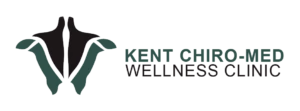You should see a sports physiotherapist if you are experiencing consistent pain, reduced physical activity, or muscle imbalance after a sports injury. Sports injuries are defined as damage to the tissues of the body that occurs as a result of sport or exercise. If you experience consistent pain as a result of one of the following sports injuries, it is time to see a sports therapist.
1. Strains
Strains are by far the most prevalent type of sports injury, simply because we exercise and play with so many muscles and tendons. All of these moving parts are prone to stretching further than they should or moving in ways they should not, tearing, damaging, and injuring them. Strains to the hamstrings, groin muscles and quadriceps are all common and require sports physiotherapy. The majority of strains are mild and resolve on their own with rest. Sports therapy may include warming up and stretching before engaging in vigorous activity to minimize the risk of strained muscles and tendons.
2. Sprains
An athlete can suffer from sprains due to stretching and damage to the ligaments. Ligaments are the connective tissues that link bones. When these ligaments twist in the incorrect direction, they might pull or tear. Ankle sprains are the most common type of sprain in athletics, followed by knee sprains, wrist and elbow sprains, and so on. Physiotherapy treatment may include ice packs, massage therapy, and hydrotherapy. Pre-workout stretches and warmups, as well as practicing proper technique in the sport can help in injury prevention. Sprains frequently leave the ligament weak and prone to further sprains.
3. Knee Injury
The knee is a very complex joint that is subjected to significant impact and wears during the majority of sporting activities. Rips of the anterior cruciate ligament (ACL), as well as cartilage tears, dislocations, and fractures, are extremely common and may result in chronic pain. Athletic therapy may include recommendations on proper padding, bracing, warm-ups, stretches, and good posture to reduce the risk of an acute injury. Depending on the nature of your sporting injury, your physical therapist can devise a treatment plan for rehabilitation.
4. Fractures
Impact and contact sports frequently result in bone fractures (most commonly in the arms, legs, and feet), which are painful, require weeks of immobilization to heal, and may occasionally require surgery to correct. While fractures are an inherent danger in most rigorous and/or contact sports, they can be minimized by wearing suitable protection, warming up, exercising to maintain muscle strength and flexibility, and practicing proper technique.
5. Tennis Elbow
Tennis elbow does not only require participation in tennis. It can indicate a repetitive injury– a straining of the elbow ligaments caused by excessive use and repetitive exercise. Competitive athletes tend to pace themselves to avoid it. Sports physiotherapy for tennis elbow may include manual therapy, exercises, or shock wave therapy. Tennis elbow can be prevented by taking regular breaks, engaging in other activities, and always preparing by warming up and stretching before playing.
6. Plantar Fasciitis/ Shin Splints
Plantar fasciitis is a condition in which a tendon in the arch of the foot becomes inflamed, resulting in sharp pain with each step. Shin splints refer to an inflammation of the muscles in the lower thigh produced by repeated stress and high impacts associated with sprinting, dodging, or abrupt stops and starts. Both are frequently used by runners, joggers, soccer, and basketball players, among others. The sports injury treatment plan includes proper stretching and periodic rest.
7. Back injuries
Almost every sport involves some sort of stress on your back and spinal column. Over time, this tension may manifest itself as inflammation around the vertebrae and back muscles, occasionally resulting in disc damage and frequently resulting in upper or lower back discomfort. Occasionally, a sudden jarring collision might also result in an acute back injury. The rehabilitation process can range from rest to physical therapy to surgery, depending on the severity of the disease. The greatest method to minimize your chance of back discomfort and injury is to maintain strong and flexible back muscles with regular low-impact activities, warm-ups, and even a healthy diet.
- Acupuncture Ottawa
- Chiropractor Ottawa
- Custom Orthotics Ottawa
- Graston Technique Ottawa
- Head & Neck Pain Ottawa
- Low Back & Hip Pain in Ottawa
- Middle Back & Shoulder Pain Ottawa
- Physiotherapy Ottawa
- ACL Injury Treatment Ottawa
- Arthritis Pain Relief Ottawa
- Back Pain Relief in Ottawa: Your options for treatment
- Child Youth Sports Injuries & The Treatments Available Ottawa
- Chronic Pain Relief: Treatments That Can Help Ottawa
- Concussion Treatment In Ottawa: The Best Ways To Get Better Quickly
- Pain Relief for Elbows, Wrists, & Hands Ottawa
- Treatments for Balance and Gait Disorders Ottawa
- Ottawa Shockwave Therapy
- Spinal Decompression Ottawa
- Sports Physiotherapy in Ottawa
